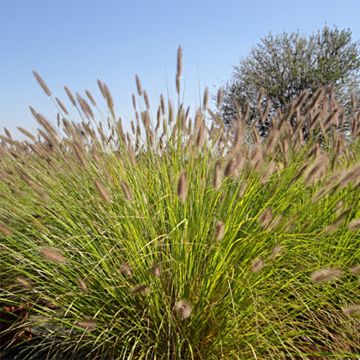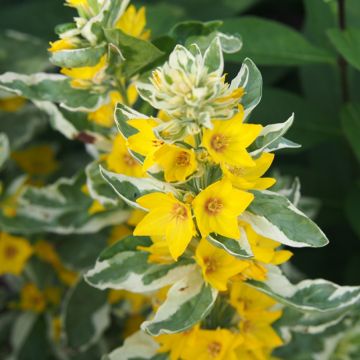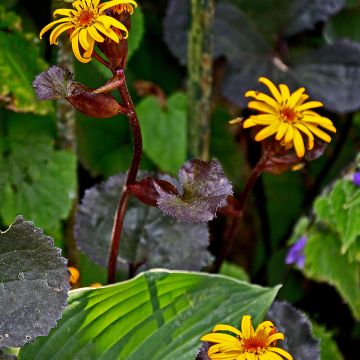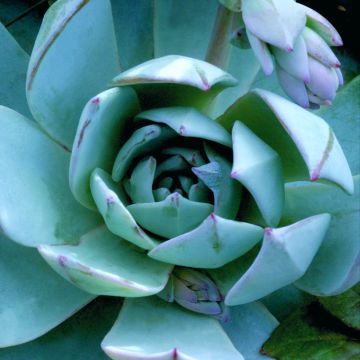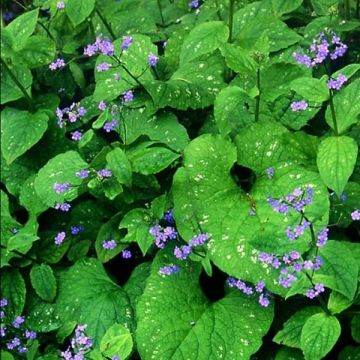

Schizachyrium scoparium
Schizachyrium scoparium
Blue stem, Little Bluestem, Beardgrass
This item cannot be shipped to the selected country
Delivery charge from €5.90
More information
Schedule delivery date,
and select date in basket
This plant carries a 12 months recovery warranty
More information
We guarantee the quality of our plants for a full growing cycle, and will replace at our expense any plant that fails to recover under normal climatic and planting conditions.
From €5.90 for pickup delivery and €6.90 for home delivery
Express home delivery from €8.90.
Does this plant fit my garden?
Set up your Plantfit profile →
Description
Schizachyrium scoparium is a perennial grass with an unpronounceable name, little known and rarely used in our gardens. However, it is one of the most beautiful, due to its foliage that changes colour throughout the seasons. This plant forms an upright tuft, which is green in spring, before gradually turning blue in summer and blazing in autumn with shades of orange and purple. The late flowering emerges among the colourful foliage in delicate and initially shy inflorescences, which then reveal themselves under the light, drying to a silvery hue. This botanical species is fully hardy. It thrives in well-drained, even poor, soils and in full sun, adding a light and picturesque touch to shrub and perennial beds.
Schizachyrium scoparium, formerly named Andropogon scoparius, is a plant of the Poaceae family, endemic to the high plains of North America, but also present from Quebec to Mexico. Vigorous, accustomed to tough competition with other plants, and well adapted to difficult conditions, it withstands cold and drought. It also tolerates poor soils without flinching. It forms a tuft 80cm (32in) to 1m (3ft) tall when in flower, with a width of 50cm (20in), slowly spreading to form an upright bush. It is composed of a base rosette of flexible, linear leaves, and upright stems among which appear delicate inflorescences in late summer or autumn. These are narrow clusters, measuring 3 to 15cm (1 to 6in) long, bearing slender white spikelets, maturing to an ashy silver hue. Towards mid-September, the entire plant takes on reddish-purple hues with violet reflections, becoming increasingly intense until November, and then turning coppery brown. This colouring is even more pronounced in regions experiencing large temperature variations in autumn.
Schizachyrium scoparium has the enormous advantage over many other grasses of remaining upright, without slumping, and therefore remains decorative until the heart of winter. It withstands everything except heavy, waterlogged soils and, as such, is very useful in ornamental dry gardens or in poor, unfertile, or sandy soils. It pairs well with hyssop, catmint, shrubby sage, and mugwort. For a contrast of forms, it can be combined with hybrid mulleins or rose mallows. It is only natural that this marvel has found its place in our beds, among deschampsia with a very pale gold colour in autumn.
Report an error about the product description
Schizachyrium scoparium in pictures




Flowering
Foliage
Plant habit
Botanical data
Schizachyrium
scoparium
Poaceae
Blue stem, Little Bluestem, Beardgrass
North America
Other Ornemental grasses A to Z
Planting and care
From its origins, Schizachyrium scoparium retains excellent resistance to cold and summer drought. Accustomed to living in the vast North American prairies where competition between grasses is intense, it requires a very open, very sunny exposure to thrive. It needs very well-drained soil, even dry, or poor, dreading overly rich, shaded and too moist soils in which it does not live long.
Planting period
Intended location
Care
-
, onOrder confirmed
Reply from on Promesse de fleurs
Coloured foliage perennials
Haven't found what you were looking for?
Hardiness is the lowest winter temperature a plant can endure without suffering serious damage or even dying. However, hardiness is affected by location (a sheltered area, such as a patio), protection (winter cover) and soil type (hardiness is improved by well-drained soil).

Photo Sharing Terms & Conditions
In order to encourage gardeners to interact and share their experiences, Promesse de fleurs offers various media enabling content to be uploaded onto its Site - in particular via the ‘Photo sharing’ module.
The User agrees to refrain from:
- Posting any content that is illegal, prejudicial, insulting, racist, inciteful to hatred, revisionist, contrary to public decency, that infringes on privacy or on the privacy rights of third parties, in particular the publicity rights of persons and goods, intellectual property rights, or the right to privacy.
- Submitting content on behalf of a third party;
- Impersonate the identity of a third party and/or publish any personal information about a third party;
In general, the User undertakes to refrain from any unethical behaviour.
All Content (in particular text, comments, files, images, photos, videos, creative works, etc.), which may be subject to property or intellectual property rights, image or other private rights, shall remain the property of the User, subject to the limited rights granted by the terms of the licence granted by Promesse de fleurs as stated below. Users are at liberty to publish or not to publish such Content on the Site, notably via the ‘Photo Sharing’ facility, and accept that this Content shall be made public and freely accessible, notably on the Internet.
Users further acknowledge, undertake to have ,and guarantee that they hold all necessary rights and permissions to publish such material on the Site, in particular with regard to the legislation in force pertaining to any privacy, property, intellectual property, image, or contractual rights, or rights of any other nature. By publishing such Content on the Site, Users acknowledge accepting full liability as publishers of the Content within the meaning of the law, and grant Promesse de fleurs, free of charge, an inclusive, worldwide licence for the said Content for the entire duration of its publication, including all reproduction, representation, up/downloading, displaying, performing, transmission, and storage rights.
Users also grant permission for their name to be linked to the Content and accept that this link may not always be made available.
By engaging in posting material, Users consent to their Content becoming automatically accessible on the Internet, in particular on other sites and/or blogs and/or web pages of the Promesse de fleurs site, including in particular social pages and the Promesse de fleurs catalogue.
Users may secure the removal of entrusted content free of charge by issuing a simple request via our contact form.
The flowering period indicated on our website applies to countries and regions located in USDA zone 8 (France, the United Kingdom, Ireland, the Netherlands, etc.)
It will vary according to where you live:
- In zones 9 to 10 (Italy, Spain, Greece, etc.), flowering will occur about 2 to 4 weeks earlier.
- In zones 6 to 7 (Germany, Poland, Slovenia, and lower mountainous regions), flowering will be delayed by 2 to 3 weeks.
- In zone 5 (Central Europe, Scandinavia), blooming will be delayed by 3 to 5 weeks.
In temperate climates, pruning of spring-flowering shrubs (forsythia, spireas, etc.) should be done just after flowering.
Pruning of summer-flowering shrubs (Indian Lilac, Perovskia, etc.) can be done in winter or spring.
In cold regions as well as with frost-sensitive plants, avoid pruning too early when severe frosts may still occur.
The planting period indicated on our website applies to countries and regions located in USDA zone 8 (France, United Kingdom, Ireland, Netherlands).
It will vary according to where you live:
- In Mediterranean zones (Marseille, Madrid, Milan, etc.), autumn and winter are the best planting periods.
- In continental zones (Strasbourg, Munich, Vienna, etc.), delay planting by 2 to 3 weeks in spring and bring it forward by 2 to 4 weeks in autumn.
- In mountainous regions (the Alps, Pyrenees, Carpathians, etc.), it is best to plant in late spring (May-June) or late summer (August-September).
The harvesting period indicated on our website applies to countries and regions in USDA zone 8 (France, England, Ireland, the Netherlands).
In colder areas (Scandinavia, Poland, Austria...) fruit and vegetable harvests are likely to be delayed by 3-4 weeks.
In warmer areas (Italy, Spain, Greece, etc.), harvesting will probably take place earlier, depending on weather conditions.
The sowing periods indicated on our website apply to countries and regions within USDA Zone 8 (France, UK, Ireland, Netherlands).
In colder areas (Scandinavia, Poland, Austria...), delay any outdoor sowing by 3-4 weeks, or sow under glass.
In warmer climes (Italy, Spain, Greece, etc.), bring outdoor sowing forward by a few weeks.








































